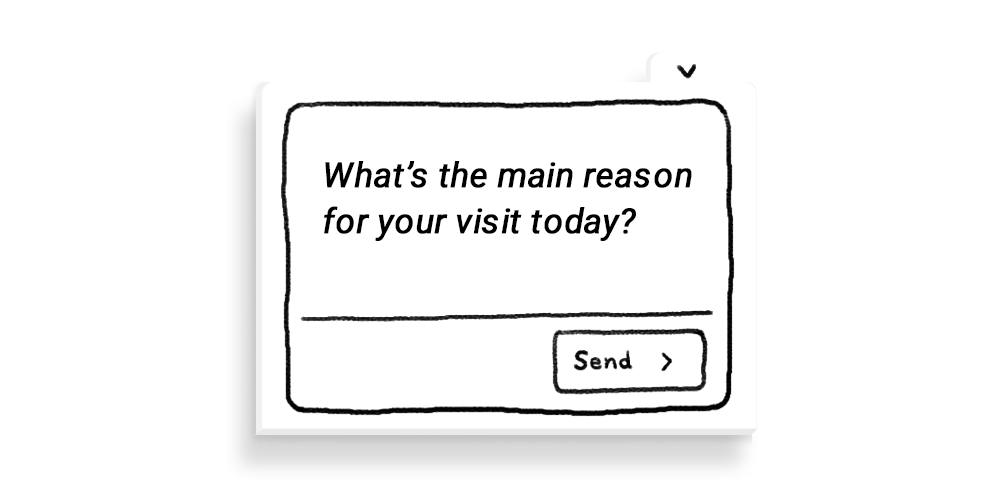
Source: FreePik
I head Digital Strategy, Analytics & Paid Media at Puretech Digital. My job offers enthusing opportunities to interact with both B2B and B2C organizations. During my interactions, I’ve often noticed that ‘lack of accurate assessment of a brand’s digital presence’ is often the root cause of ambiguous Digital Strategy.
In many of my interactions, the conversations start with some of the following illusory questions.
- What is the benchmark CPL (Cost Per Lead) / CAC (Customer Acquisition Cost) for Google Search in our industry?
OR
- What strategy should we have on Twitter as we don’t get any engagement?
OR
- How much money should we be spending on advertising for our own Brand Keywords?

Source: Dilbert Cartoon on Goals
These questions do not have a definite answer. ‘One Size Fits All’ does not bode well with the fundamentals of Digital Marketing. Answers of these questions need to be supported by relevant information, valid assumptions and familiarity surrounding the current state of affairs on digital mediums.
You probably are a pro at Digital Strategy and
some of these may be basic but knowing the detail for all of it is extremely
critical to help you set up some SMART goals.
Specific, Measurable, Actionable,
Relevant & Time-bound.
Source: FreePik
We will talk about the goals during our subsequent interactions but right now, we need to focus on asking the right questions to help us factually & realistically define these goals.
Below are the questions you should definitely have answers to:
1. Does your brand have a website/app that is mobile friendly & delivers a seamless browsing experience across devices?
An easy to load, understand and render website is absolute primary to ensure your Digital presence is effective. You may not have a state-of-the-art website, but you should have something workable.
How do you answer if it is workable? Simple. Go through your site as a genuine user looking for your product or service and find out if have any trouble browsing through it on your phone. You can also do the Mobile Friendly Test by Google to help you with your findings.
2. Does your web property have all the information that the user needs to make a decision?
A very subjective question as it really depends on the nature of the business, type of your audience and many other things. But there is also a science behind it. Quick keyword research can give you a fair idea about how many pages of content you need vs. how many you have.
You can choose any site that is related to your field of business/study/ competition & that ranks on Google. Use the URL of that site with the Google Keywords tool to identify a top-level list of keywords which may be relevant. As a rule of thumb to help you guesstimate the number of pages needed on your site, you can assume the following:

This, of course, needs further validation but remember, right now you are doing a quick assessment and we are yet to deep dive.
3. Is the page updated with all necessary information to lead into a conversion?
To the modern consumer, it is important that you give all the necessary information, answer all preludes that he may have. Different categories/products have different purchase cycles and thus information may be needed in different depths depending on your product of service.
However, some simple challenges are hindrances in the conversion process. You may want to seek some answers for some interesting questions:
- What drives people to your website?

Source: hotjar
- What might stop potential users?

Source: hotjar
- Find your high-exit pages
- Find the most problematic section(s) on your drop-off pages
- Watch how people interact with each page
- See what’s causing user frustration
- What really persuades visitors to act?

Source: hotjar
4. Are the technical, content and presentation elements of the site in your control?
You may not have answers to all the questions above or may realize that some of these need some quick fix. For this, you should have control over the content & other elements of the site. You should be aware of what you can or can’t change. It just makes the entire process more realistic.
5. Do you have basic web analytics implemented for your site? Is the implementation showing accurate numbers and measurement of the site traffic?
Check if all pages of the site are tagged properly and they all report data that you need. Simple goal setups, funnels, dashboards for your everyday performance view are easy to set up and are a must for any size of business. If you do not have them, get a quick audit done from someone who knows Web Analytics and get an understanding of ‘What you should be measuring?’
6. Does your brand have a presence on the various Social Media channels?
Right now, you are just assessing the assets you have and figuring out if you do have presence & control of all properties across relevant social channels.
Second, understand the target audience and mapping audiences to purchase funnels.
- List down all URLs across all platforms for your reference.
- If any campaigns/promotions have been run, list down the details of how the audience has been targeted.
- Find out what channels does your brand use to engage with your audience and how are they used.
7. Who is your target audience?
Is there a person – real or fictional that can help describe an ideal user? It always works if you are able to define the persona of your best customers and some other customers. You can take quick help from HubSpot and CrazyEgg.
8. Are there specific events/moments when one can establish the need for the product/service? How aware is the market about the presence of your product/service?
Events / Moments can be anything which is cyclical, predictable, need-based, etc. which can help reach out & narrow down to the right audiences. Simple examples are below:
- Every year, a lot of people flock for The Dubai shopping festival
- A lot of people do pest control before Dussehra / Diwali
- People apply for scholarships for post-graduation more from January to April than during the other part of the year
You need to have an example related to your business/service to help you define this.
9. When in need of your product/service, where would the TG begin their hunt? Is there an existing downstream process that’ll lead a user to become a customer online?
Does your site have a complete journey to on-board a customer? How does a customer reach your site? Where does he start his search? Where all does, he looks for you?
Make a list of top things that come to your mind and those should be good, to begin with as channels for Digital Marketing.
10. Do users need more convincing before they decide to go for the service/product? What would help a user choose the service/product? Are there any USPs?
A quick competition study should give you answers to both the questions. You can always keep in mind that competitors are the best inspiration.
Source: InspiredToReality
11. Can you incentivize the users who are digitally engaging with your brand?
Depending on your brand/product the incentives will change, but everyone likes a good bargain. So, if you can you should incentivize the users. All types of users can have incentives but remember, incentives should be tangible.
12. What are the objectives of your Marketing Campaigns?
What do you want people to do when they come to your site? How would you measure if they did what you expected them to do?
Understand that not all users are going to do what they are expected to, it is important that you also define small milestones as goals. Setting these small milestones will also allow you to identify different type of users. Having some idea about the questions above helps you define a number or a numeric to chase. Remember, it is more or less always possible to put a number value to measure your goals in a Digital campaign.
13. What is your budget and outlay for marketing activity? What is an affordable Cost/Acquisition for a new customer?
Just like Stock Markets, Digital Media requires you to put your money at the right place to reap maximum benefits. Sometimes the gains may look slow, but it is more about investing in the right assets and activities at the right time. So, if you have a limited budget, it’s better to start with a cap than go for a Blue Ocean approach.
Each brand has its unique business model, budget and technical limitations. Based on your answers to the above questions one can chalk out a strategy that’ll help set some goals.
While the list of questions is very comprehensive, I believe there’s always space for improvement. Do write to us at info@puretech.com if you have any other interesting questions that I may have missed. Also, if you have all or even some of the answers to the above questions and would like to discuss your Digital Strategy over a cup of coffee you can write to kedar.kulkarni@puretech.com and I will be glad to be involved.


